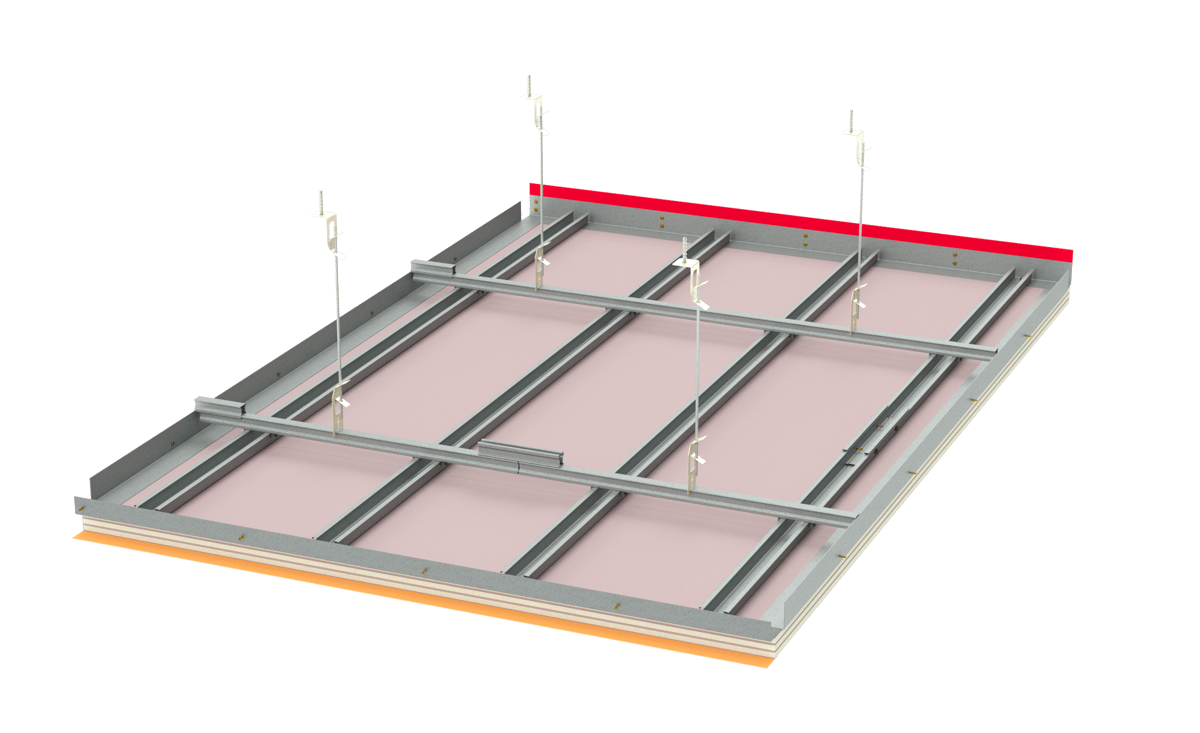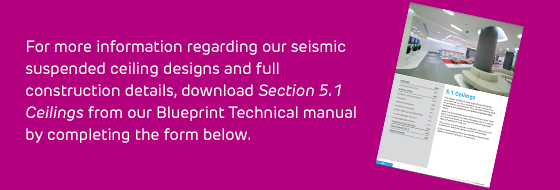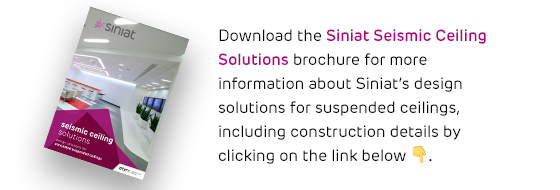
-1.png?width=1200&length=1200&name=Seismic%20Type%20B%20Fixed%20Floating%20with%20wall%20framing%20(5b)-1.png)


Siniat's suspended ceiling systems suspend a grid of Siniat Furring Channel and Siniat Top Cross Rails below a supporting structure by means of clips and hangers. The structure can then be sheeted with Siniat plasterboard or Siniat's acoustic ceiling lining.
Suspended ceiling design allows the designer to bring the ceiling level down to the required height and provides space in the ceiling cavity for services such as air-conditioning and electrical cabling.
In terms of Section 8 of AS 1170.4 ceilings are a non-structural building component that needs to be designed to resist earthquake forces.Siniat’s suspended ceiling systems were tested for seismic performance and compliance at a leading facility in the USA. Here our systems were subjected to rigorous testing in real-world, large-scale conditions. The results have given us a better understanding of how our seismic ceiling solutions perform under seismic loads.
Please note that project details must be determined by structural design and the design of suspended ceilings will require a structural assessment unique to every project.
Siniat’s suspended ceiling systems were tested for performance and compliance at the Pacific Earthquake Engineering Research (PEER) Centre at the University of California at Berkeley, USA.
This testing facility allows for the rigorous testing in real-world, large-scale conditions. The results have given us a better understanding of how our seismic ceiling systems perform under seismic loads.
Comprehensive testing allows us to further improve the way these systems perform and gives us the confidence to offer customers solutions that have been proven to be able to withstand severe seismic loads.
Siniat can offer three types of internal suspended ceiling solutions that comply with seismic requirements. All three types were tested in the US, and passed performance ratings suitable for Australia.
The three solutions are differentiated by the size of the ceiling area and seismic loads, and all three can be used in fire-rated and non-fire-rated applications.
- Type A (Fire rated and Non-fire rated): One side fixed and the opposite side sliding.
Type A can be used in small to medium rooms. It is also suitable for long corridors without the need for plenum bracing, e.g. in shopping centres or hospitals. The design is used for fire-rated and non-fire-rated applications.
- Type B (Fire rated and Non-fire rated): Two adjacent sides fixed and two adjacent sides free.
Type B is typically used in small to medium rooms. During an earthquake the ceiling will move with the wall on the fixed sides, but move freely on the free sides. The design is used for fire-rated and non-fire-rated applications.
- Type C (Fire rated and Non-fire rated): 2-way plenum brace with four sides free.
The main advantage of this installation is that it can be used in ceilings of all sizes. The Type C design solution does not rely on any perimeter fixing but rather uses a ceiling plenum bracing system to stabilise the ceiling during a seismic event.
There is no perimeter fixing, allowing for movement on all sides. The design is used for fire-rated and non-fire-rated applications.
Unique to the Type C solution is the Seismic Ceiling Bracket (SCB), 80 mm wide Universal Bracket (UB80) and the 45° Soffit Bracket (SB45), exclusively manufactured by Siniat. Click here for more details.

.jpg?width=1200&length=1200&name=IMG_1379%20(1).jpg)

